 |
| Home |
| 1 Ancient Mesopotamia |
| 2 Ancient Egypt |
| Ancient Greece |
| 3 Ancient Rome |
| Judaism and Christianity |
| 4 Byzantine and Islamic Civilization |
| Indian Civilization |
| 5 Chinese civilization |
| Japanese civilization |
| Early American Civilization |
| 6 Early Ages, Romanesque, Gothic |
| Renaissance |
| 7 Baroque,18th,Romanticism, Realism |
| 8 Belle Epoque,Chinese & Japanese society |
| 9 Russian,Age of Anxiety,Africa, Latin Am. |
| 10 Age of Affluence, diversity |
|
|
 |
|
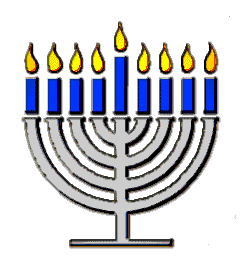
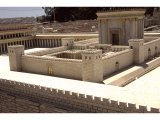 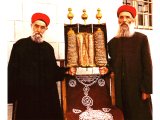 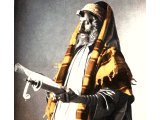
Judaism 
Section: The Early Period
Related: Judaism
The history of Judaism predates the period to which
the term itself actually refers, in that Judaism formally applies to the post-Second Temple period, while its antecedents
are to be found in the biblical “religion of Israel.” The Bible is no longer considered a homogeneous work; the
many traditions represented in it demonstrate variance and growth. While the historicity of the patriarchs' existence and
of Moses as the giver of all laws is under question, certain dominant themes can be seen developing in this early period
that have importance for later Judaism.
Central to these themes is the notion of monotheism, which
most scholars believe to have been the outgrowth of a process that began with polytheism, progressed to henotheism (the worship
of one god without denying the existence of others), and ended in the belief in a single Lord of the universe, uniquely different
from all His creatures. He is compassionate toward His creation, and in turn humans are to love and fear (i.e., stand in awe
of) Him. Because God is holy, He demands that His people be holy, righteous, and just, a kingdom of priests to assist in the
fulfillment of His designs for humankind and the world.
Israel's chosenness consists of this special
designation and the task that accompanies it. God promises the land of Canaan to Israel as their homeland, the place in which
the Temple will be built and sacrificial worship of God carried out. The holy days were the Sabbath, Passover, Shavuot, and
Sukkoth; and circumcision, dietary laws, and laws pertaining to dress, agriculture, and social justice characterized the structure
of the biblical religion. Three types of leaders existed during this period: the priest ( kohen ), who officiated in
the Temple and executed the laws; the prophet ( navi ), to whom was revealed God's messages to His people; and the
sage ( hacham ), who taught practical wisdom and proper behavior. There was developing already in this early period
a belief in the ultimate coming of God's kingdom on earth, a time of peace and justice. To this was added, after the destruction
(586 BC) of the First Temple and the Babylonian captivity (which many saw as the consequence of idolatry and which may have
been responsible for the final stage of the development from polytheism to monotheism), the expectation of national restoration
under the leadership of a descendant of the Davidic house, the Messiah .
Section: The Postexilic Period
Related: Judaism
It was after the Babylonian captivity (not later
than the 5th cent. BC) that a compilation of earlier texts and oral traditions was made, forming the canon of the Torah, the
Five Books of Moses. Subsequently 34 other books were added to form the Hebrew Bible or Old Testament , though the canon was not finalized until perhaps as late as the 2d cent. AD The Torah was traditionally attributed
to Moses, and study of the Torah was accompanied by expositions and explanations in which the Oral Law, as distinct from the
Written Law (the Torah text), is rooted. While it is widely held that the Pharisees further developed the Oral Law, in opposition to the literalness of the Sadducees , it is inconceivable that the latter group could have administered the biblical laws without reinterpreting
them in accordance with a changing world, or in the face of a lack of specificity in the text.
The Babylonian exile had exposed the Israelites to new ideas, and it is to that period that the notions of identifiable angels
(such as Michael and Raphael), of the personification of evil (Satan), and of the resurrection of the dead can probably be
traced. The conquests of Alexander the Great once again brought the Jews into contact with new ideas, most significantly that
of the immortality of the soul. Conflict arose within the community of Israel concerning the level of Hellenization acceptable,
out of which came the revolt of the Maccabees against the Seleucid rulers of Syria and their Judean sympathizers. The resulting martyrdom of many gave added
impetus to the belief in collective resurrection of the dead and the immortality of the soul after the body's death. These
concepts were wed in such a way that while the body awaited its resurrection, the soul was seen as living on in another realm.
This new development in no way supplanted the earlier notion of earthly reward; life on earth, however, was viewed by many
as preparatory for the next.
As the conditions of life deteriorated, apocalyptic beliefs grew—national
catastrophe and the messianic kingdom were seen as imminent events. Some groups (see Essenes ; Qumran ) fled into the desert to lead righteous lives in anticipation, while others followed claimants to the mantle
of Messiah (most notably Jesus). Out of these numerous ingredients came both Christianity and classical,
or rabbinic, Judaism.
|
 |
|
Section: After the Destruction of the Second Temple Related:
Judaism
Developing over a period of five centuries (until c.AD 500), rabbinic
Judaism completed the process already underway, which saw the replacement of the Temple by the synagogue (the Second Temple was destroyed in AD 70), of the priest by the rabbi , and of the sacrificial ceremony by the prayer service and study. Basic to these changes was the redaction and codification
of the Oral Law (see Mishna ; Talmud ) and the Midrash , which, as outgrowths of the biblical religion, centered on the relationships between God, His Torah, and His people, Israel.
Emphasis was placed upon study of the Torah (in its broadest sense) as the most important religious act, leading to an understanding
of the proper way of life; upon the growing need for national restoration in the face of continued Exile from the Promised
Land; and upon the function of this world as preparatory for the World to Come ( Olam ha-Bah ), while not devaluing
the importance of life in this world. Daily life was sanctified by the emphasis in Jewish law (
halakah ) on the ritual fitness of foods ( kashrut ), the recitation of blessings for a variety of mundane acts, and the daily,
weekly, monthly and annual cycles of prayer. Rites for the personal life cycle came to include circumcision of male infants
at the age of eight days, signifying their induction into the covenant between God and Israel; the recognition of thirteen
years as the age of majority for religious responsibilities (see Bar Mitzvah ); marriage; and funeral rites. During the medieval period, these trends continued and were basic to the several important
codifications of the legal material and to the many biblical and Talmudic commentaries that were composed at this time (most
notably by Rashi and Maimonides ).
ANSWER THE FOLLOWING QUESTIONS ABOUT JUDAISM:
1. How did the Jews end up in Israel if they are from Mesopotamia?
2. What made the Jewish religion different from other ancient religions?
3. What is the role of the ten commandments in Jewish religion?
4. What is the role/s of a prophet in the Jewish society?
5. Why is the Bible considered a literary book?
6. What are dead sea scrolls?
7. What is the cause of the conflict between Israel and Palestinians today?
8. Why do the Israelites consider themselves the chosen people?
9. What does the term holocaust mean? What is its cause?
10. Why are the Jews scattered all over the world?
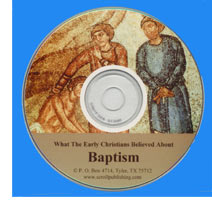 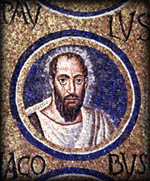 ANSWER THE FOLLOWING QUESTIONS ABOUT EARLY CHRISTIANITY. p.213 textbook, Arts and Culture
1. What is the main belief of the early christians?
2. Why were the early christians in Rome?
3. Why were many Jews sceptical of Jesus as the Savior?
4. How did Christianity spread all over the civilized world?
5. Why are catacombs important among the early christians?
6. Why is the New Testament considered a work of Literature?
7. What are the characteristics of early Christian music?
8. What are some of the ideas of St. Augustine about God?
9. Why did the Roman emperors persecute the early Christians?
10. How did Christianity become a world dominant religion?
Early Christians in Rome
Peter and Paul
The first of the Apostles to come to Rome, probably in about 42 A.D., was Peter. Although it had already been made clear
to him (see Acts 10) that the Gospel was intended for the Gentiles as well as the Jews, he seems to have preached chiefly
among the latter: he was a simple fisherman, after all, and probably knew little Greek and no Latin, which made it hard for
him to communicate with the Romans.
Paul first came to Rome in about 63 A.D. As a Roman citizen, when he was falsely accused by the Jews in Jerusalem (Acts
22-28) he asked to be tried in Rome. He stayed for two years, awaiting judgment, and during that time was free to receive
visitors and to preach the Gospel (Acts 28 xxx-xxxi). He had been called to bring the Good Word to the Gentiles (Acts 26,
xvii-xviii).
In 67 A.D., during Nero's persecution, both Peter and Paul were martyred. Peter, as a foreigner, was crucified, but as
he went to his death he said he was not worthy to die in the same position as Jesus Christ and asked to be nailed to the cross
upside-down. Paul, a Roman citizen, was beheaded with a sword. In Rome there are many pictures of them both, in frescoes,
reliefs and mosaics, some dating from as early as the 3rd century A.D. Peter is always depicted with curly hair, generally
holding a key, while Paul is shown as balding, with a scroll, or sometimes a sword, in one hand.
The early Christians in Rome greatly revered the saints' memory. Numerous medallions bearing their pictures were found
in the catacombs, and the places where they had lived and worshipped were venerated. At the same time, however, Church leaders
had a difficult task preventing a schism between the Jewish and non-Jewish components of the Christian community. Peter was
always considered as representing the Jews and Paul the Gentiles, but the two saints are often depicted together, symbolizing
the unity of the Church in its diversity.
Christian meeting-places
For about 250 years after the death of Peter and Paul, persecution forced the Christians into hiding and many were martyred
in their turn. They could not erect special buildings in which to meet and worship, so they met in private houses, identified
by the nameplate on the door, called a "title" (titulus in Latin): the titulus Pudentis (house of Pudens) and
titulus Clementis (house of Clemens) were known from the very earliest times. (Pudens and Clemens are both mentioned
in Paul's letters.)
(Incidentally, it is not true that the Christians met in the catacombs, which were simply burial-places, for Jews and pagans
as well as Christians.)
As time passed and the community grew, a larger room was sometimes created within the house as a special meeting-place
for the congregation. In some cases the central hall of a private baths complex, known in Latin as a basilica, was
used for this purpose: it must have been convenient to have a pool near at hand for the baptismal ceremony, as baptism was
by total immersion. This is probably the origin of our word "basilica", meaning a church.
After the "legalization" of Christianity (see below), numerous churches were built in Rome, on the sites where saints had
been martyred, over their tombs and over the private houses (tituli) where the early Christians used to meet. The latter
became the "titular" churches assigned to the cardinals.
Constantine
At the beginning of the 4th century, two men vied to be emperor of Rome. One was Maxentius, the other was Constantine.
At first Maxentius prevailed, but in 312 A.D. Constantine marched on Rome with his army; Maxentius met him at the bridge known
as Ponte Milvio, just north of Rome. Before the battle, Constantine had a vision: he saw a flaming cross in the sky, and heard
a voice speaking the words "Under this banner, you will win".He defeated Maxentius and became a Christian, together with all
his family: his mother, Helen, and his daughter, Constantia, were both extremely devout. (The battle of Ponte Milvio is illustrated
in Roman reliefs on the Arch of Constantine and in frescoes painted in the Vatican in the early 16th century.)
Constantine built huge churches over the tombs of Peter, Paul and other Christian martyrs. The original Basilica of St.
Peter's was demolished in the 16th century and the present one built on the same site: the altar is exactly over St. Peter's
tomb. The Constantinian Basilica of St. Paul's survived until the last century, when a great fire destroyed all but the apse
and the medieval cloister. The present church is a copy of the original one, and in this case, too, the altar is exactly over
the tomb of the saint to whom it is dedicated.
Traces of the early Christians in Rome today
Medallions, oil lamps and other objects found in the catacombs can be seen in the Vatican Library. The Pio-Christian Museum,
also in the Vatican, houses reliefs and inscriptions with Christian themes.
There are about sixty different catacombs, but only a few can be visited: those of St. Callixtus, St. Sebastian, Priscilla,
Domitilla and St. Agnes are generally open to the public.
The Church of San Clemente stands on the site of the titulus Clementis and it is possible to visit the remains of
Roman houses beneath the church.
The Church of Santa Pudenziana, on the site of the titulus Pudentis, was made out of the basilica of private baths
that were built over the house of Pudens in the 2nd century. Part of the original black-and-white mosaic paving and the original
brickwork can still be seen.
By special request to the Vatican, it is possible to visit the necropolis underneath the Basilica of St. Peter's, housing
part of the saint's original tomb.
|
 |
|
|
 |
|
|
 |
|
|
|
|
Enter supporting content here
|
|
|
 |

